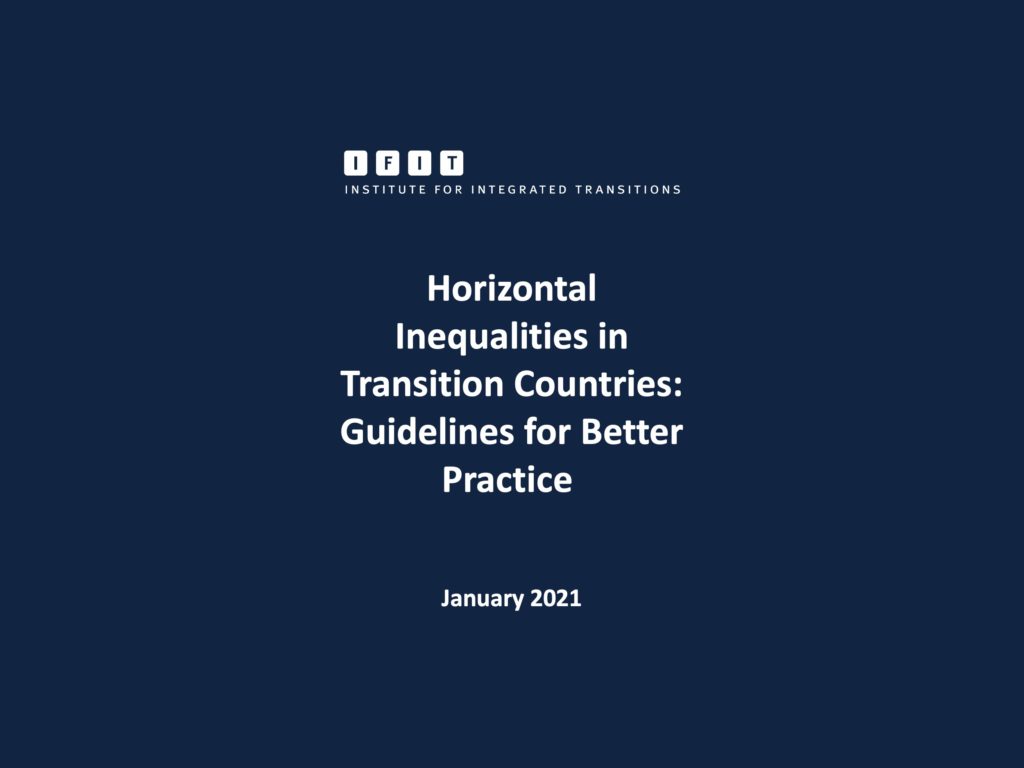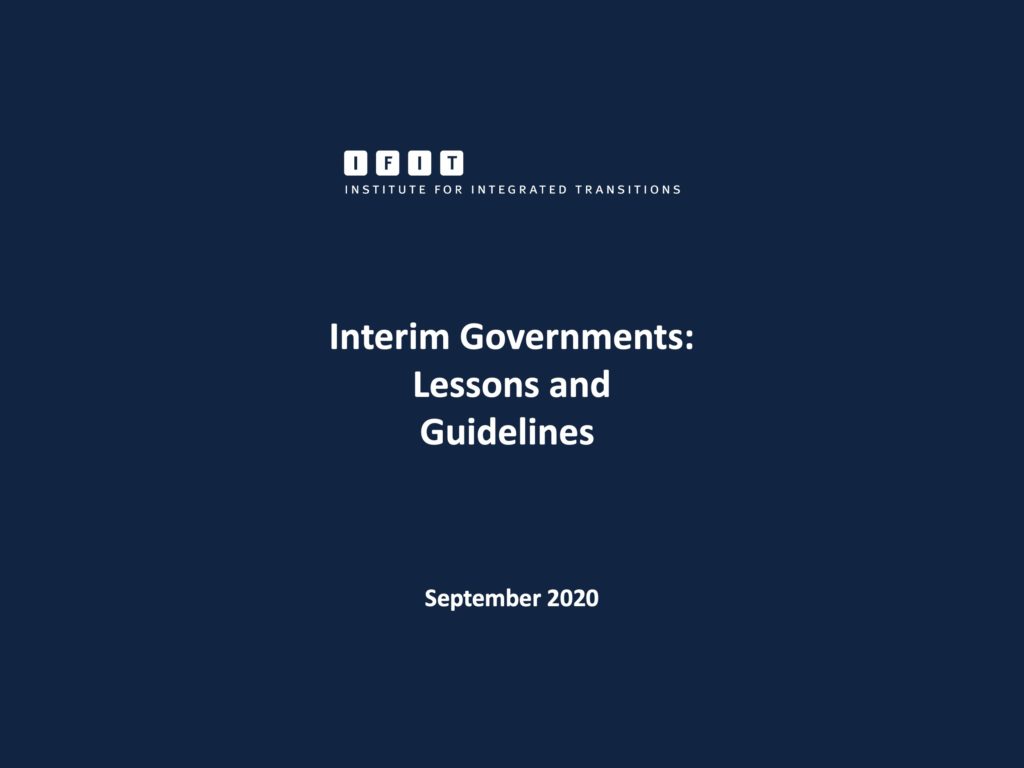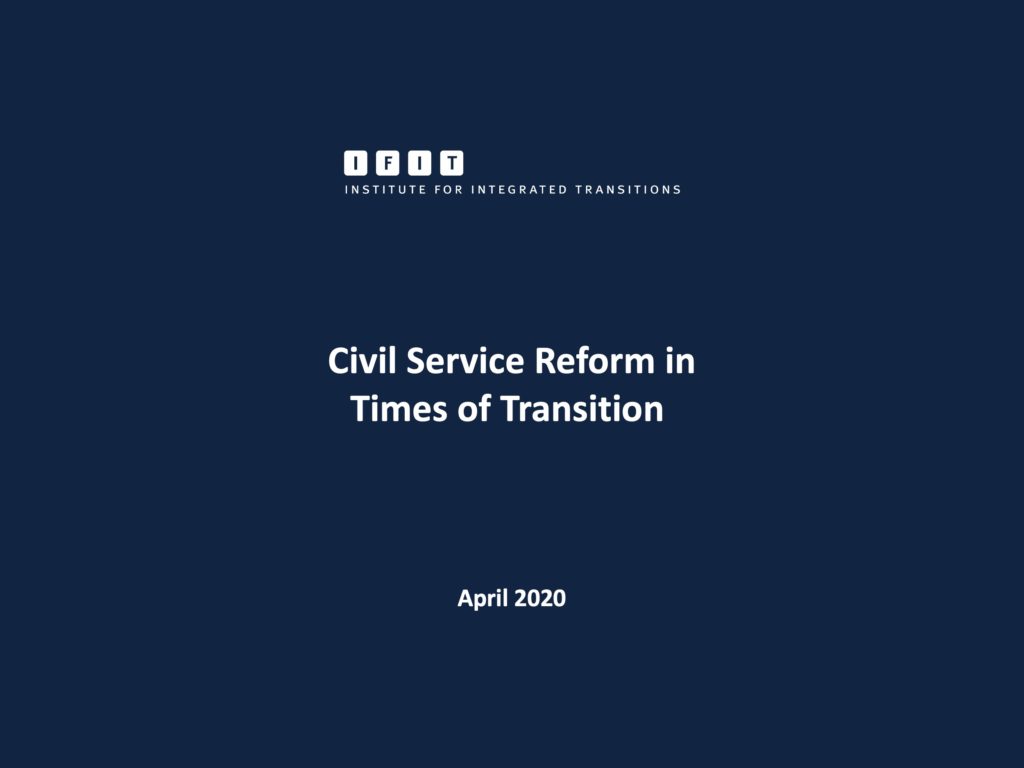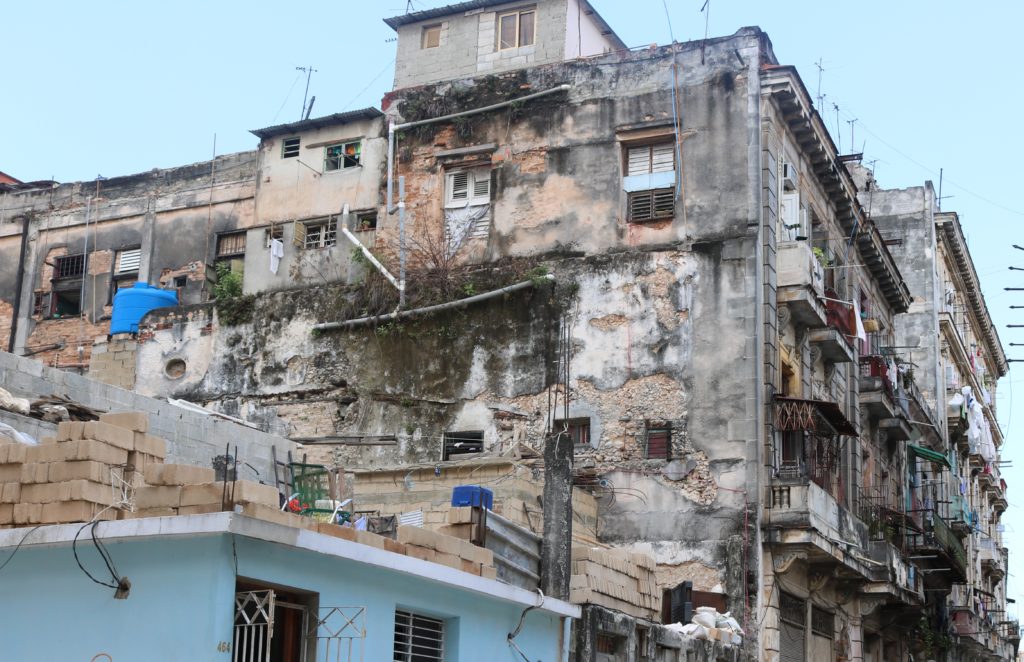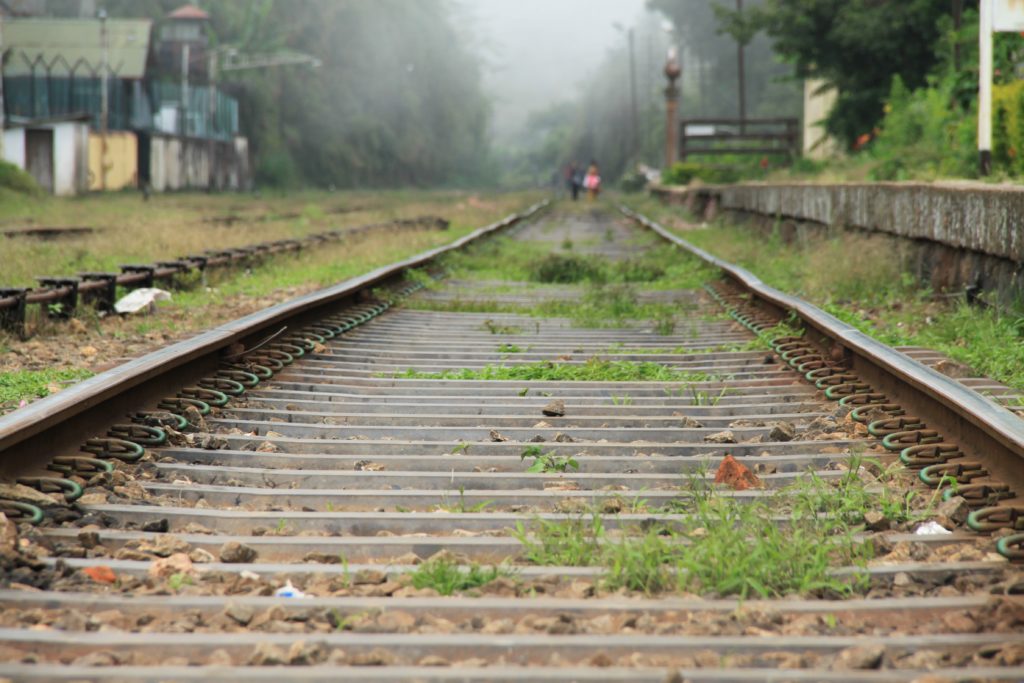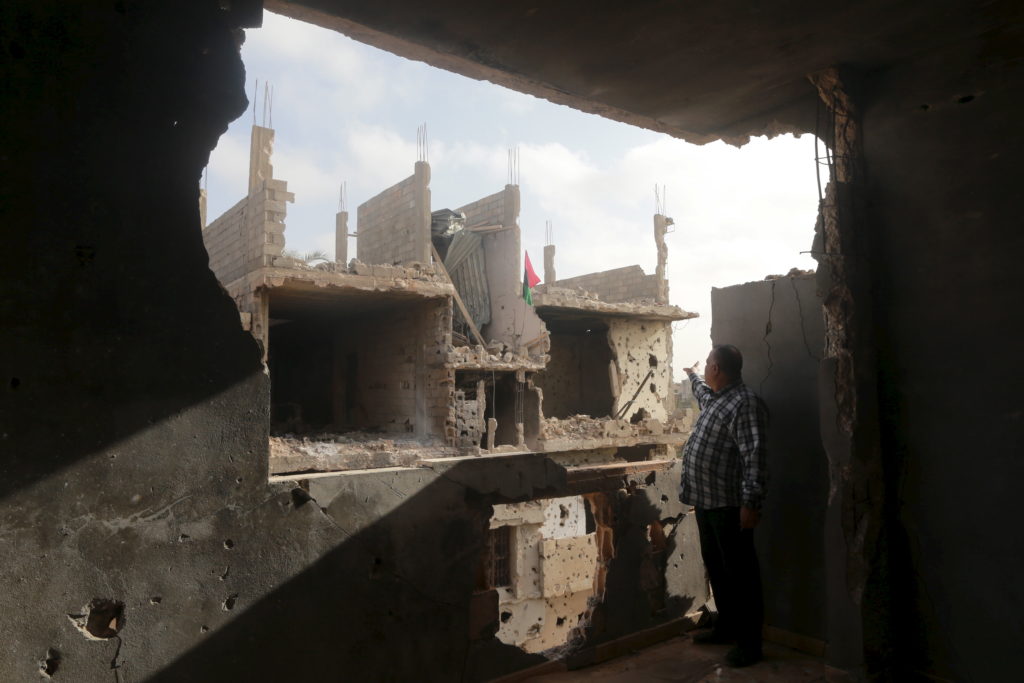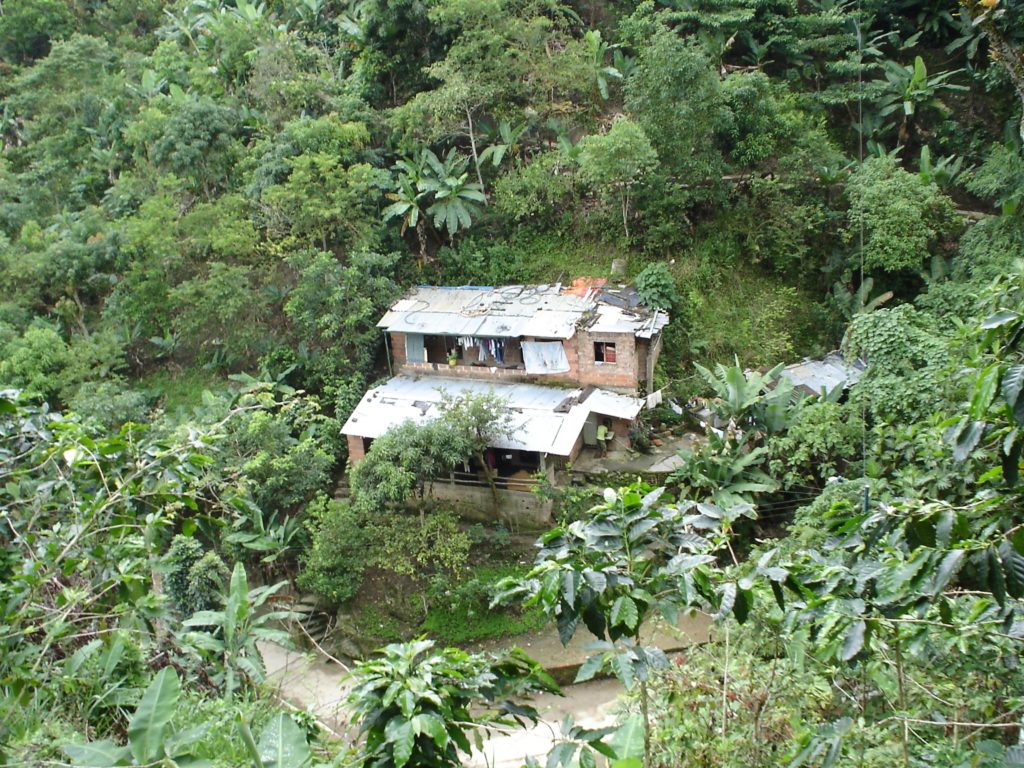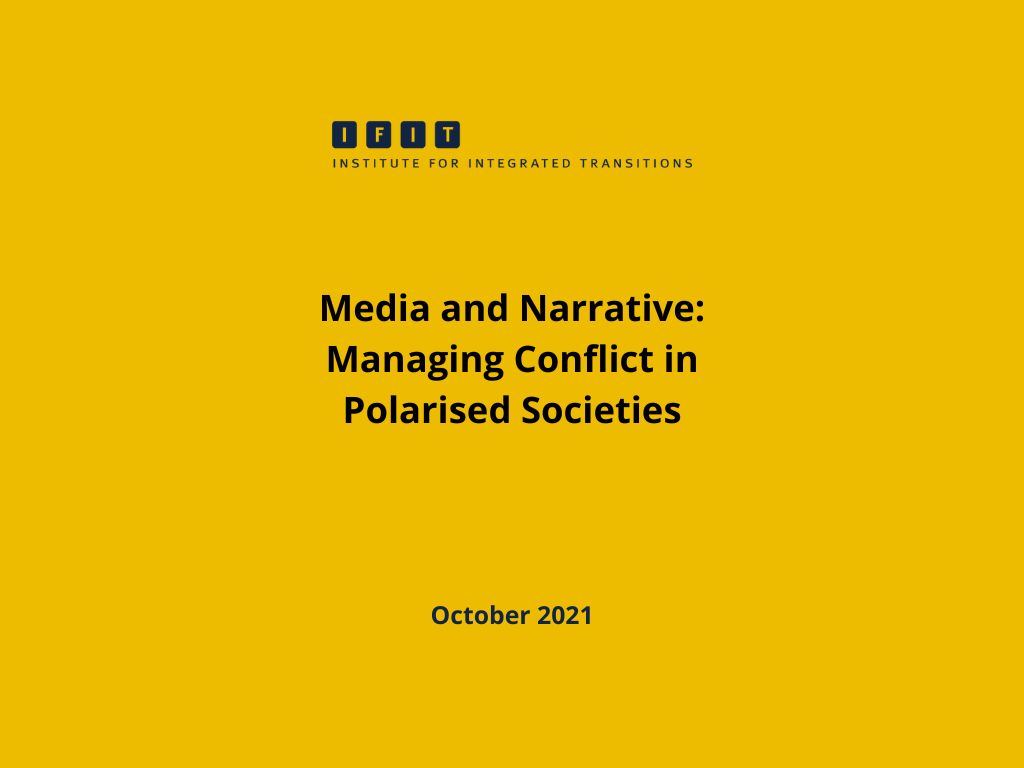Dramatic upheaval in the Middle Eastern landscape in recent years has given the United States and its allies renewed appreciation for how weak states affect international security and other foreign policy goals. It has become obvious that the wars in Syria, Iraq, and Libya have threatened Europe’s security. Likewise, the waves of refugees washing up on Europe’s shores have damaged the continent’s political coherence and deranged the domestic politics of many of its states. Meanwhile, weak cohesion and governance made Ukraine vulnerable to Russian revanchism, and they also made a slew of African states vulnerable to terrorism, armed conflict, and state collapse. These dangers are likely to grow as technology empowers non-state actors to challenge not only the postwar liberal international order but the underlying Westphalian order as well. As the ability of small groups to undermine political order expands, the stresses on weak governments will increase.
To be sure, in some cases the risks posed by weak states have been overstated—most notably the threat posed by Iraq in 2003. But such mistakes do not invalidate the general problem set, which consists not only of crises fixed to a particular time and place, but also of the second- and third-order effects that an initial crisis generates over time. The proper way to think about weak state risk, therefore, is in terms of a risk cascade.
The knock-on effects from initial crises are notoriously hard to predict, which means that policymakers rarely have a firm grasp on how to respond to the initial crisis. For example, the civil war in Syria originally looked to many like an isolated, containable problem that posed few risks to the West. But then it became an incubator of terrorist groups such as the Islamic State and Jabhat al-Nusra, which helped to destabilize Iraq again, followed more recently by Turkey as well. The conflict’s accentuation of sectarian divisions throughout the Middle East and beyond has helped to focus Iranian-Saudi antagonism in a dangerous way, turning what was a local fight in Yemen into a regional one. That antagonism now also threatens to inflame other states in the region, such as Lebanon, Bahrain, and Saudi Arabia itself. That, in turn, could pose risks to the security of oil exports from the region, which would likely have global economic effects.
Aside from generating the largest source of refugees since World War II, the Syrian cauldron has also provided a means for Russia to re-engage in the geopolitics of the Levant. Russian efforts to weaponize migrant flows out of Syria to Europe have given the Kremlin additional leverage to weaken liberal democratic forces within some key “new” European Union members and hence to further vitiate European and Transatlantic resolve with respect to Ukraine. What started as a Levantine tragedy has now become a global challenge with many dimensions. The risk cascade of the Syrian civil war is thus far more extensive than most observers would have predicted five years ago.
Syria is not the only example we can cite. Even beyond Iraq and Libya in recent times, there is Afghanistan back in the 1980s, which gave rise to a jointly produced Soviet-U.S.-Pakistani risk cascade. On perhaps a less strategically salient scale, what started out as a vicious but narrow Rwandan tragedy ended up disrupting the politics and stability of Central Africa, with consequences still echoing today. But despite these and many other examples, U.S. policymakers still lack an analytical framework to accurately assess risk cascades and their importance to U.S. national interests. American policymakers need to better leverage U.S. assets to assess, prevent, and respond to conflicts and troubled states. In sum, we need to do a better job of connecting the dots, a problem not limited to dealing with fragile and failing states.
The Rise and Fall and Rise of Fragile States
Although concerns over fragile states began to influence U.S. national security thinking in the late 1990s, when the United States was at its strongest position with respect to other world powers in generations, 9/11 catapulted the issue to center stage. Top officials became so worried after the attacks that they put such countries at the very center of security concerns. As the 2002 U.S. National Security Strategy (NSS) declared, “The events of September 11, 2001 taught us that weak states, like Afghanistan, can pose as great a danger to our national interests as strong states.”1
Other Western governments followed suit, reorienting their foreign policy and aid toward fragile states.2 Government bodies, think tanks, academics, intergovernmental organizations, nongovernmental organizations, and even corporations convened commissions, conducted inquiries, and launched programs focused on fragile states. Lists proliferated, indices multiplied, and a small industry of consultants and analysts flourished.
The boom was followed, as many booms are, by a bust. Many of the ideas around fragility were not necessarily wrong, but the dangers came to be seen as exaggerated, and related ideas about how to diagnose and counter fragility were not based on a mature appreciation of what ailed countries. There was excessive focus on poverty, technocratic capabilities, and Western normative ideas of governance. The World Bank, for instance, framed the whole issue around income levels; only low-income countries could be on its list of fragile states. The Institute for State Effectiveness argued that fragility was caused by a state’s inability to handle ten key functions and that the way forward depended on addressing these deficiencies.3 Indices such as the Fund for Peace’s Failed States Index (now called the Fragile States Index) aggregated quantitative data on violence, corruption, state capacity, and regime type to try and gauge how fragile a state is.
The bust was epitomized by the Obama Administration’s skeptical approach. In its view, while fragile states posed problems for international order, they had but weak links to American foreign policy concerns. In many cases, the issues that mattered were more likely to be a product of corrupt or misgoverned but still functional states such as Pakistan rather than failed ones such as Somalia.4 In any case, a targeted approach to achieving U.S. aims would work better than any attempt to prop up weak states as a group. The 2010 NSS emphasized that the “the gravest danger to the American people and global security” was threats related to “weapons of mass destruction, particularly nuclear weapons” before going on to dwell on issues such as cyber threats, climate change, and dependence on fossil fuels. “Weak and failing states” mattered in this analysis, but only as part of the larger strategic context.
The bust was followed by a search for a more realistic equilibrium. In this case, the implosion of several Arab states starting in 2011, and the consequences that followed, forced a correction. Parallel concerns about health pandemics, international crime, and the weakness of some African countries certainly helped, too. The result is that today we have a synthesis of previous positions. The 2015 NSS elevates the “significant security consequences associated with weak or failing states” to one of its eight “top strategic risks.” The increasing attention to fragile states within the U.S. policymaking community has been paralleled internationally.5
At the same time, a better understanding of the drivers of fragility—the fruit of more than a decade of research—has yielded a much stronger emphasis on the role of politics, institutions, and social exclusion. There is now a consensus that persistent inequalities between different societal groups, lack of inclusive growth, and weak institutions are crosscutting issues, as recent examples in Iraq, South Sudan, and Yemen highlight. Such thinking was also reflected in the 2015 NSS, which stated that “the nexus of weak governance and widespread grievance allows extremism to take root, violent non-state actors to rise up, and conflict to overtake state structures.”
Similarly, the 2015 OECD report “States of Fragility” declared that “the key drivers of conflict in many of the fragile and conflict-affected countries often revolve around injustice, inequality, ethnic tensions and, in extreme cases, religious radicalisation of various kinds. . . . Weak institutions could also be a source of collapse in seemingly strong states.”6 The UN’s global development agenda shifted in 2015 from a focus on poverty, education, and health (in the Millennium Development Goals) to building resilient states with “peaceful and inclusive societies, access to justice for all, and effective and capable institutions” (in the Sustainable Development Goals).7
Of course, some still believe, as Amy Zegart wrote in 2015, that “Washington’s paranoia over weak and failing states is distracting it from the real national security threats.”8 But the Obama Administration seemed capable of downplaying the significance of both weak and strong state challenges; it did not need distractions to shape its risk-averse disposition.
Now that we are in the post-Obama era, such evaluations seem less important. What is important is that we understand that, while fragile states are certainly not the main threat that the United States faces—threats posed by China, Russia, Iran, North Korea, and a coterie of sub-state Islamists are arguably greater—under-reacting to them and the multiple-order effects of fragility nevertheless remains a problem, as the Syria and Libya debacles have demonstrated.
Moreover, as we can see from the Russian element in the Syria example, these threat domains are not hermetically sealed off from one another. They interact, sometimes nastily. That is why it still matters that fragile states are the least understood, most unpredictable, and least well-planned for set of risks U.S. policymakers face. We can do better.
Difficulties Assessing Risk
The U.S. government should rationally and systematically assess and address the wide range of risks that face the country, but there are myriad ideological, institutional, and informational reasons why this rarely happens. Too often, policymakers emphasize the wrong risks or respond to the right risks in the wrong way.
There are at least five factors that hamper effective risk analysis. One is that, as Eliot A. Cohen has argued, top officials often are so overwhelmed by competing concerns that they are short of time to effectively make what are hard choices. Important decisions are inevitably decided upon by very few people, who only have so many hours a day to investigate issues and possible responses, leading to muddled thinking and uncreative policy prescriptions.9 The difficulties are multiplied by the vastly different kinds of risks leaders must consider. Dealing with China, for instance, requires a different approach than dealing with a weak state; few have the breadth of experience and knowledge necessary to manage both well.
Such difficulties are often exacerbated by the difficulties of managing a sprawling bureaucracy made up of institutions and individuals that compete over policy and the importance of their own role in making it. Put simply, as Cohen and other veterans of the U.S. foreign policy maelstrom know: “Orderly administration is very hard.”
The media and domestic politics don’t make decision-making any easier. Too often, they force leaders to respond to crises that might be better left ignored, such as in Libya in 2011. Or they lobby for decisions that are best left deferred—or never taken—such as support for an independent South Sudan.10 Or they oversimplify issues in ways that distort priorities, as has often been the case with foreign aid, where programs have become too risk averse, too focused on short-term results, and too partial to using American suppliers and contractors.11 On the other hand, some important issues go completely ignored even when they are important because of the lack of media attention or a domestic constituency to lobby for them, as was the case with healthcare infrastructure in fragile states, which only became important after Ebola.
Administrations try too hard to avoid mistakes from the past, falling into a “history trap.”12 The Clinton Administration stayed away from Rwanda because of scars earned in Somalia; meanwhile, hundreds of thousands were murdered. The Bush Administration was too aggressive in Iraq because it feared the consequences of being too passive after 9/11. The Obama Administration was overly cautious in Syria partly because of the quagmire of Iraq. Every time an event smells of appeasement (justly or not) Neville Chamberlain and his policies on Nazi Germany are hauled out of the history larder. The more a government makes decisions either in response to what are likely bent parallels, or in reaction against its own or its predecessors’ mistakes, the more likely it is to be wrong.
Finally, fragile states pose particular challenges for Washington politicians and policymakers because few are deeply familiar with the problems of underdevelopment, sectarianism, and state capture. Countries with stark social divisions and a weak or nonexistent government apparatus do not respond well to the typical Western liberal recipe offered—elections, economic reform, and the introduction of new institutions rarely stabilize situations. On the contrary, such policies can easily destabilize a state, begetting conflict and criminality, especially when done on the short time horizons that international actors prefer. Fragile states have unique problems that need deep study to be understood and effectively addressed. Investments to prevent crises are often not particularly expensive, but they do require the kind of long-term commitment that few administrations are primed to give.
Effects of the Risk Cascade
The risks emanating from fragile states are especially hard to assess because, as already noted, their most important components are often second-, third-, or even later-order effects that combine to create a large impact. Risk cascades exist because some events have a way of rippling across countries, institutions, non-state actors, supply chains, markets, and populations often in a nonlinear fashion. This does not mean “everything is connected to everything else”—what Hegel called the phenomenology of fools, because it negates any prospect of usefully prioritizing causality. But many things are related to many other things, and by prioritizing causality accurately we can know a good deal more about them than we do now.
While all risks produce multiple-order effects, risk cascades are particularly important in fragile states because the social and institutional fabric is susceptible to relatively mild shocks or stresses that would not harm more resilient systems. As such, just as companies must analyze how risk cascades through an entire value chain, the U.S. government should analyze how risk cascades through the entire governance system and economy in any country that might be affected.
The Libyan conflict presents a graphic example. The fall of Qaddafi created a power vacuum that has contributed to the destabilization of much of the Sahel, affecting countries from Mauritania to Chad and beyond; it strengthened Boko Haram, which is fighting four governments; it led to terror attacks and worries in relatively stable countries such as Côte d’Ivoire and Senegal; it spread weapons to groups seeking to overthrow the Egyptian state; it spread terror to Tunisia, which has had an especially devastating effect on the economy of the one success story of the so-called Arab Spring; and it produced a steady stream of refugees seeking safe haven in Europe. Along with the refugees from Syria, these have, in turn, contributed to a weakening of the European Union and the rise of right-wing parties across the continent. And the cascade is ongoing.13
The myriad problems that affected Mali, a relatively stable country before the fall of Qaddafi, became much more acute when the fallout from Libya settled on it. Social exclusion, weak institutions, a dysfunctional democracy, and a restive military led, when combined with the weapons proliferation and the expansion of secessionist and extremist claims produced by Libya’s vacuum, to a collapse of state authority in Mali’s north, a coup d’état in Bamako, and ongoing violence. Only an international intervention prevented either a radical Islamist takeover of the Malian state or its territorial dismemberment. The rest of the Sahel is similarly affected, if not to the same degree…yet. But debates over whether to intervene in Libya and to what extent to be involved after the fall of Qaddafi paid little heed to the larger implications for a dozen or so neighboring countries.14
The risks from fragile states come in many forms:
- Fragile states can transmute their instability across borders. The conflicts in Syria and Libya have destabilized their neighbors. The genocide in Rwanda continues to haunt the eastern DRC. Conflict in West Africa and the Balkans in the 1990s spread from country to country, sometimes involving the same actors.
- Terrorist groups can use fragile states as bases from which to threaten other countries. The Islamic State uses its base in Syria and Iraq to plot attacks overseas. Boko Haram started in Nigeria but now threatens four countries.
- Criminal gangs and networks feed on state weakness to smuggle goods, trade weapons, grow or ship illicit drugs, and so on. The gains they make can be used to spread violence and corruption across borders, as has happened in the Andes and Central America. The instability they foment can drive refugees to safer harbors, producing trails of migrants such as those who flee Central America for the United States.
- Poor infrastructure, road blockages, and instability can easily disrupt trade routes and natural resource supplies, raising prices, reducing competitiveness, and disrupting supplier and customer networks. The war in Mozambique hurt countries that depended on its ports for trade. Middle Eastern wars have hurt Turkish trade. Somali piracy has raised costs for those shipping near the Horn of Africa. Instability in the Niger Delta has periodically cut supplies, increasing world oil prices in the process. Economic meltdown in Venezuela threatens all the countries that depend on its largesse for oil and aid.
- Conflict can lead to the loss of markets and remittances. Eritrea lost by far its largest export market due to the war with Ethiopia in the late 1990s. Instability in Côte d’Ivoire, the most dynamic country in Francophone West Africa, hurt all of its neighbors. The drop in oil prices has hurt not only countries overly dependent on oil (for example, Nigeria, Gulf states, Angola, Russia) but also those whose remittances or export earnings depend on those countries (for example, Central Asia, poorer Middle Eastern countries, Niger, Togo, and Benin).
- Changes in the discourse around ethnicity, religion, politically acceptable behavior (for example, coup d’état), and so on can spur bad behavior or radicalization in nearby countries. Islamism has spread across the Middle East partly as a response to its weak state system and changes in regional discourse over religion. Sectarian discourse has also proliferated in recent years, acting as destabilizing force in some cases. Norms around democracy have changed, encouraging leaders in some weak democracies (for example, Turkey, Thailand) to reduce restraints on their authority.
- Refugees from conflict or weak economies increase the stress on social services, prices, job markets, and ethnic dynamics. Syrian refugees risk destabilizing Jordan and Lebanon and have had a major impact on European politics.
- Diseases such as Ebola and Zika can spread because of weak healthcare systems in fragile states, disrupting economies, weakening states, and draining budgets. Ebola affected three countries in West Africa in 2015 and threatens to return. Concerns about infectious diseases having a far larger impact on the world are growing.
- State weakness can encourage neighborly interventions that spread instability or even weaken the countries doing the intervening. The second Congo War (1998-2002) involved as many as nine African countries, as well as approximately twenty separate armed groups. Sometimes called the Great War of Africa or the African World War, it threatened to destabilize a large swathe of the continent. Saudi Arabia’s intervention in Yemen and other fragile states in its region drain its coffers of resources without necessarily increasing its security.
Is it possible to devise some sort of algorithm that can relate all these factors within a single unitary framework for policymakers? If so, it would allow policymakers at least to have some kind of interactive checklist so that truly egregious mistakes might perhaps be avoided. And some recent mistakes do fall into that category, regrettably.
Alas, we don’t know the answer to this question because, while various scholars have taken preliminary whacks at devising a unitary analytical framework, the U.S. government has never really tried. Some efforts were mooted in the early days after 9/11, but nothing remains of them now. It is worth asking, therefore, if the United States would have acted differently in Iraq in 2003 or Libya in 2011 if it had possessed a way to reckon the cascading effects of intervening? Would it have acted differently in Syria in 2013 and Iraq in 2009 if it had known the cascading effects of not intervening? The fact that U.S. policymakers made mistakes in judgment in all these cases strongly suggests that there is ample room for improvement.
Better Prioritizing and Reducing Foreign Risks
Effective assessment and prioritization of risk is possible; the number of dots in need of connection is large but not infinite. We know this because other governments seem to do a better job at this than we do. France held off from intervening in Mali throughout 2012 because it judged the risks to its interests could be contained but then abruptly shifted course in early 2013, when Islamist fighters captured the central town of Konna and announced plans to attack Bamako. The changing context determined the level of risk to its interests and the importance of acting to protect them.
Russia carefully assessed its risks and interests when setting policy in Syria. From the start of the conflict, it supported the Assad regime, a long-standing ally, but limited its assistance to weapons, military advice, and diplomatic support. But when the government’s position weakened in 2015, increasing the risks to Russian interests, Russia inserted military forces to stabilize the situation and reverse losses on the ground. Expectations were kept modest and did not include winning the war. As a result, limited force managed to reverse the tide of the conflict and shore up the government’s position and morale with only modest risk. It is less clear that Russia calibrated its risks and interests in Ukraine, where it may have overestimated its interests based on historical ties and underestimated the fallout from intervening; sanctions have bit hard, especially given falling oil prices.
In theory, at least, senior U.S. officials could do at least as well if they manage to rethink how to organize the government’s intelligence, diplomatic, and aid apparatuses such that they are better informed, more agile, and more responsive when combating the risks we face.
As a start, more systematic and regularly undertaken assessments and prioritizations of risk are necessary both to establish a more rational hierarchy of national security risks and to increase our ability to invest in upstream prevention measures. Too often, we are surprised by how fragility affects states, and just as often we fail to use our immense resources to better understand them. Grasping the incentives and influences that affect leaders’ decisions is crucial to better prevention, but it requires broader and deeper political analyses of ruling parties, non-state actors, opposition groups, institutions, militaries, and leading members of civil society at all levels. This includes marginalized regions that often get ignored but whose grievances may destabilize whole countries, as has happened in Yemen, Mali, the Democratic Republic of Congo, Pakistan, and the Central African Republic.
Regional dynamics also matter, as evidenced by the Middle East and West Africa.15 Off-the-shelf rankings of countries provide a poor gauge of such deep-seated dynamics. Instead, independently organized assessments that synthesize expert analyses with on-the-ground data are essential to monitor and interpret contexts that are rapidly changing and sometimes easily misunderstood from afar.
More investment in country experts and data collection in these contexts is crucial. Many fragile states have few international experts that consistently follow their inner workings. They have limited statistics capacity. Few international organizations regularly survey any aspect of their politics. The result is an inadequate basis for policymaking. Too often tired, one-size-fits-all approaches to helping countries are tried despite starkly different contexts, demonstrating a lack of both understanding and creativity.
As Robert Gates and others have argued, many conflicts can only be prevented or ended by use of “soft power.”16 It may by now be hackneyed to say so, but it is still true that the United States needs smarter soft power. It often depends on its robust military to address the challenges fragile states pose, at least partly because other institutions are inadequately prepared and funded, and despite the fact that they often would be more appropriate. Investment in diplomacy, diplomatic mechanisms (such as specialized international NGOs and local mediators), and international organizations such as the UN, the African Union, and ECOWAS would allow for more careful interventions.
Of course, these institutions have often come up short due to their own institutional deficiencies, and they need accountability. The UN, for instance, needs more capacity to undertake political risk assessments, diplomacy, and peacekeeping as well as stronger mechanisms to hold its representatives and employees responsible for their performance. Too often, the home of the world’s most important conflict prevention mechanisms has been ineffective. In some cases it may be necessary to establish new institutions, such as in the Middle East, which lacks a regional organization to address its various political and economic problems.
Strengthening the global, regional, and national institutions that bear the burden of the fallout from risk cascades would also help. Resilience depends on having the systems and resources to flexibly adapt and respond to crises as they appear. The better humanitarian actors, international institutions (such as the World Health Organization), and government agencies are prepared, the more likely they can absorb a combination of different risks should many things go wrong simultaneously.
Better training and preparation of State Department, allied foreign ministries, and international organizations such that they can better, more flexibly, and more quickly address issues can only help. This requires revamping training programs and improving institutions such that our frontline national representatives are best placed to assess conditions. The National Security Council and senior levels of government, in turn, need greater capacity to analyze, prioritize, and respond to potential problems before they occur.
Foreign aid plays a major if indirect role in maintaining stability across the world at relatively low cost.17 There will always be humanitarian or other goals that we will want to achieve, and aid budgets do not necessarily have to align with what a strategic reading of interests dictates. After all, aid orphans can create their own crises that, if left alone, may eventually become more significant. Many African countries, for instance, would be much weaker if aid were withdrawn, as happened toward the end of the Cold War; the bloodiest period in the continent’s postcolonial history was in the 1990s. If local conditions were better understood and risks better prioritized, then a few strategically important states could be chosen for long-term investment, as the United States did in Colombia in the 2000s. The British, French, Germans, Japanese, and even Chinese will be better placed to help certain countries than we will. Indeed, there is already a clear trend in Europe to concentrate aid on fewer countries per donor in order to improve effectiveness.18
Investment in mechanisms that reduce particular risks can also help. A string of healthcare centers across fragile states would offer early warning of potential problems much earlier than was the case with Ebola, enabling international actors to respond before a local issue becomes a regional or international risk. Global efforts to combat the trade of illicit drugs and money laundering reduce the risk that these will weaken already fragile states, as well as reduce the risk that fragile states will transmit their problems abroad.
Stress-testing countries or contexts with a number of plausible if unlikely scenarios may not produce accurate predictions, but it would expand the ability of policymakers to foresee possible implications of different situations or policy choices (for example, to intervene or not). Such exercises would help government better calibrate its actions, resulting in fewer all-or-nothing decisions; they would also better prepare it for the consequences of its choices—even choices not to act—as well as show what issues or trends should be monitored to see whether concerns are warranted. Combined with better assessments, they could lead to better-customized toolkits to address the unique challenges each country faces and be less dependent on one-size-fits-all solutions, which have repeatedly proven ineffective. A deeper understanding of the risk cascades would mean more hedging of risks by, for instance, staying in Libya in some form after the 2011 intervention or acting earlier in Syria.
Lastly, there is a need for much more honesty about U.S. limitations to effect change. Governmental institutions evolve slowly. Sectarian conflict, oligarchic control of public authority, and corruption cannot disappear overnight. Elections can help, but they can also destabilize countries where social divisions are stark. Full democratization takes generations. Sometimes it is better to seek incremental progress in a narrow range of areas rather than upturn a system that has maintained stability for a long time, even if the system does not suit our ideological tastes. As we learned after the Arab Spring, enhancing equity, inclusiveness, and legitimacy bit by bit sometimes delivers better returns than trying to achieve it by revolution.
Footnotes:
1. In a similar vein, the United States Agency for International Development’s January 2005 Fragile States Strategy declared, “There is perhaps no more urgent matter facing [us] than fragile states, yet no set of problems is more difficult and intractable. Twenty-first century realities demonstrate that ignoring these states can pose great risks and increase the likelihood of terrorism taking root.”
2.“It is very likely that the rise in instability observed over the last decade will be an enduring characteristic of the strategic landscape rather than a temporary phenomenon,” explains Investing in Prevention, a report issued by the United Kingdom’s Prime Minister’s Strategy Unit in early 2005. It concluded that fragile countries “have a significant impact on the achievement of a wider range of domestic and international objectives, including: security, humanitarian assistance, promotion of human rights, poverty reduction, terrorism, trade and prosperity, asylum, energy security and organized crime.”
3. See, for instance, “Fixing Failed States: A Framework for Rebuilding a Fractured World—Book Launch and Discussion with Ashraf Ghani and Clare Lockhart,” Public Event, Overseas Development Institute, London, May 22, 2008.
4. Stewart Patrick, Weak Links: Fragile States, Global Threats, and International Security (Oxford University Press, 2011).
5. European governments have been forced to address the fallout of the Arab Spring. The United Nations has sought to improve its effectiveness in conflict prevention and peacekeeping. The World Bank and leading bilateral donors are increasingly focused on these countries; the British government, for instance, has pledged to refocus its aid spending so that it will “target at least half of the Department for International Development’s budget on stabilising and supporting broken and fragile states.” David Cameron, “Lord Mayor’s Banquet 2015: Prime Minister’s Speech,” November 16, 2015, London.
6. Erik Solheim and Kaifala Marah, “Editorial” in “States of Fragility 2015: Meeting Post-2015 Ambitions” (OECD Publishing, 2015).
7. Aparna Ramanan, “New U.N. Goals Highlight Danger of ‘State Fragility’ to Development,” United States Institute of Peace, June 16, 2015.
8.Amy Zegart, “Stop Drinking the Weak Sauce,” Foreign Policy, February 23, 2015.
9. Eliot Cohen, “The Simultaneity Trap,” The American Interest, February 9, 2016.
10. See, for instance, Rebecca Hamilton, “Special Report: The Wonks Who Sold Washington on South Sudan,” Reuters, July 11, 2012; Alan Boswell, “The Failed State Lobby,” Foreign Policy, July 9, 2012.
11. Andrew Natsios, “The Clash of the Counter-Bureaucracy and Development,” Center for Global Development Essay (CGD, July 2010).
12. Cohen, “The History Trap,” The American Interest, February 18, 2016.
13. There are many reports of these effects. See, for instance, European Parliament, “EU Must Maintain Its Aid to Libya, Say MEPs,” February 4, 2016. Also see, Seth Kaplan, “Libya Spillover: Mapping Northern Africa’s Growing Chaos,” Fragile States Forum, July 14, 2014.
14. See, for instance, Andrew Rettman, “Mali Coup is ‘Spill-over’ From EU-led War in Libya,” EU Observer, March 28, 2012. Note also that Adam Garfinkle wrote at TAI Online in 2011 (“Down the Rabbit Hole,” March 22), “We are . . . looking into the maw of a Libya that may well be divided . . . . And in due course, if the fractious mess lasts long enough, there is a reasonable prospect that al-Qaeda will find a way to establish a foothold amid the mayhem.”
15. International Crisis Group, “Seizing the Moment: From Early Warning to Early Action,” Special Report, June 23, 2016.
16. Ann Scott Tyson, “Gates Urges Increased Funding for Diplomacy,” Washington Post, November 27, 2007.
17. At the least, foreign aid allows rulers in fragile states to maintain stable patronage systems or buy off opponents in order to keep the peace, at least in the short term. A dramatic decline in revenue from a drop in aid would decimate the tenuous links that keep countries whole, as happened the last time foreign aid declined precipitously—in the immediate post-Cold War period. See, for instance, Richard Nielsen, Michael Findley, Zachary Davis, Tara Candland, and Daniel Nielson, “Foreign Aid Shocks as a Cause of Violent Armed Conflict,” American Journal of Political Science (April 2011).
18. For instance, the United Kingdom’s Department for International Development (DFID) reduced the number of countries it serves from 49 to 27 in a 2011 review. In the same year, the Dutch government’s aid agency reduced the number of its recipients from 33 to 15 and cut the number of its target sectors to four. Annie Kelly, “Winners and Losers in the UK Aid Review,” The Guardian Poverty Matters Blog, March 1, 2011. Rizza Leonzon, “Netherlands Plans More Focused Aid Sector Priorities,” Devex Development Newswire, March 22, 2011.
Seth D. Kaplan is a professorial lecturer in the Paul H. Nitze School of Advanced International Studies (SAIS) at Johns Hopkins University, where he teaches a class on political risk. He is also senior adviser for the Institute for Integrated Transitions (IFIT) and a consultant to organizations such as the World Bank, USAID, and United Nations. The author wishes to thank Paul Stares of the Council on Foreign Relations for generating many of the original ideas in this essay during a series of conversations in the spring of 2016.
Read on The American Interest
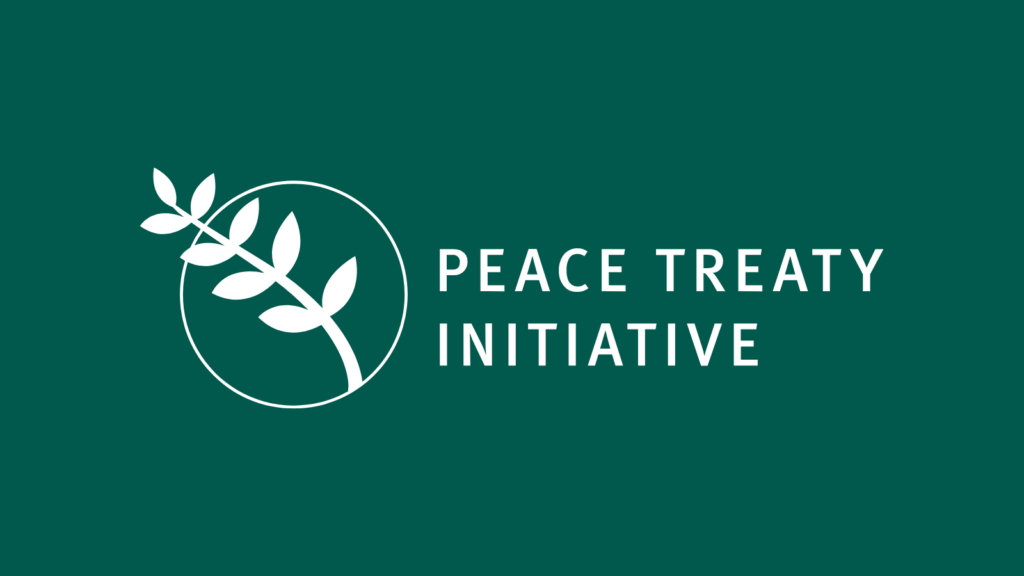
Public Commentary
Building the International Law of Peace
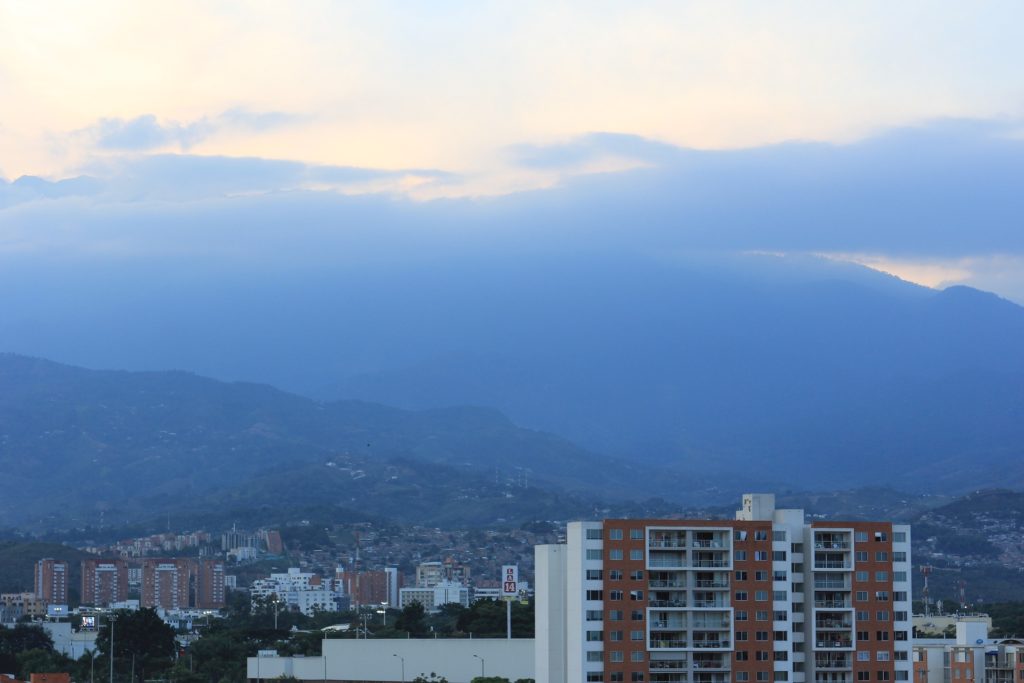
Public Commentary
Colombia’s Transitional Justice: Mission Impossible?

Public Commentary
How You Can Negotiate Justice and Peace



